Vehicle Speed & Size
 Vehicle Speed & Size
Vehicle Speed & Size

In 2023, 70% of Chicago traffic fatalities involved drivers traveling at high speeds. Severity of human injury can be amplified by the size of the vehicle involved in a crash, as well as speed. In 2023, more than half of pedestrians killed in Chicago were hit by an SUV or larger vehicle.
High Speeds
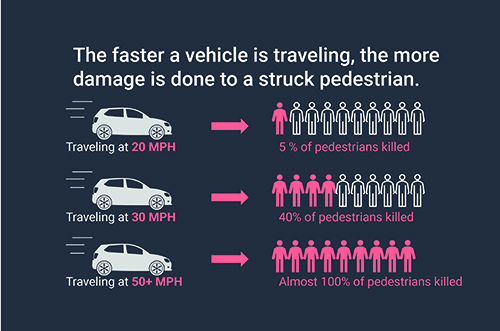
When a person is struck by a vehicle traveling at 30 MPH, there is a 40% chance that they will die. But when struck at 20 MPH, that risk is reduced to just 5%.
Speed reduction is a primary goal of Complete Streets design. This means not only the reduction of speed limits to 20 MPH, but also includes designs that make safer speeds more intuitive for drivers.
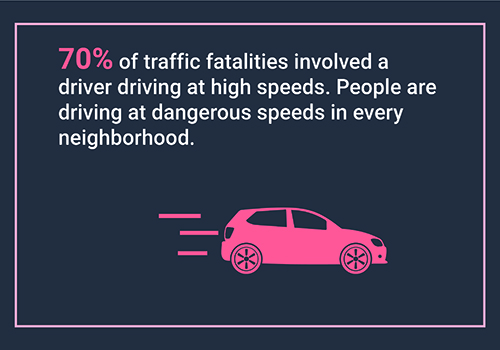
Speeding is an everyday issue that has dire consequences for residents throughout Chicago. Data analysis shows people driving at speeds above 50 MPH at all times of day and night throughout Chicago’s neighborhoods, particularly on wider arterial streets.
Large Vehicles
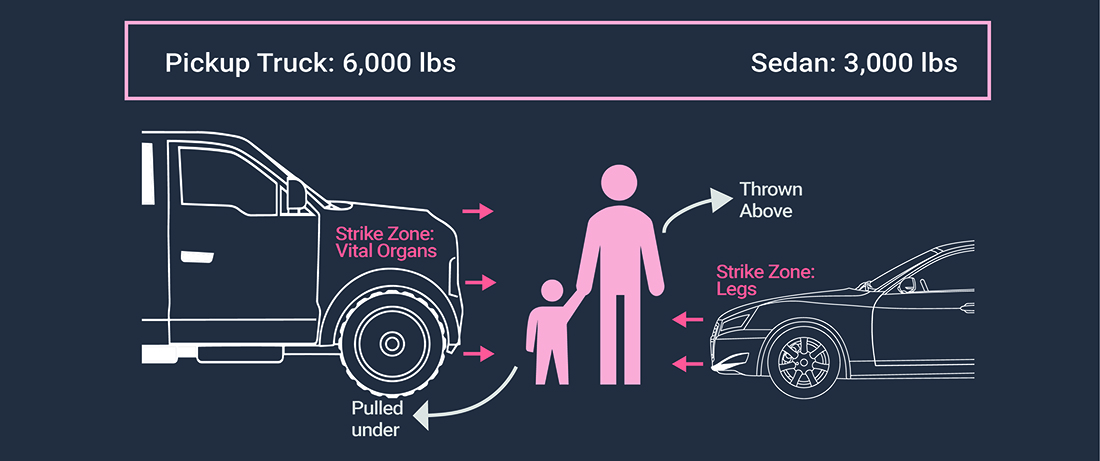
All vehicles on the road can be deadly, but crashes may be less severe when vehicles have a more tapered front end that knocks victims onto the hood of the car, instead of under the wheels. Many popular trucks and SUVs have a higher, squared-off frontend that is likely to strike a person’s vital organs, and pull victims underneath the vehicle in the event of a crash.
In larger vehicles drivers may be oblivious to having hit a person -resulting in greater injury. Children are at particular risk, as they are more difficult to see from the driver’s seat.
Wide Streets
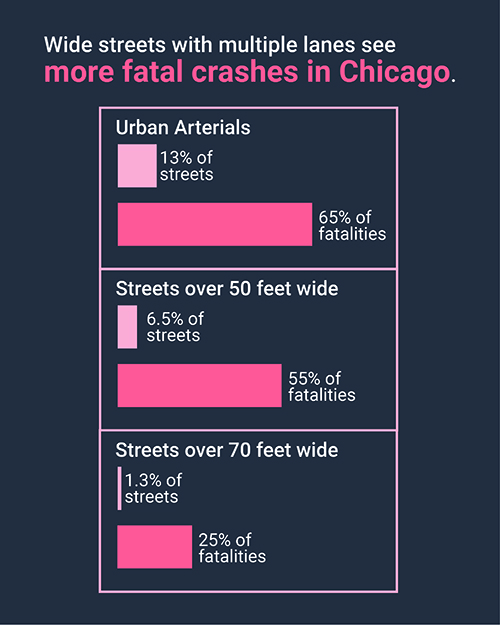
Wider streets are greatly overrepresented in traffic violence, more than half of fatal crashes in Chicago happened on streets over 50 feet wide, which are only 6.5% of our road network.
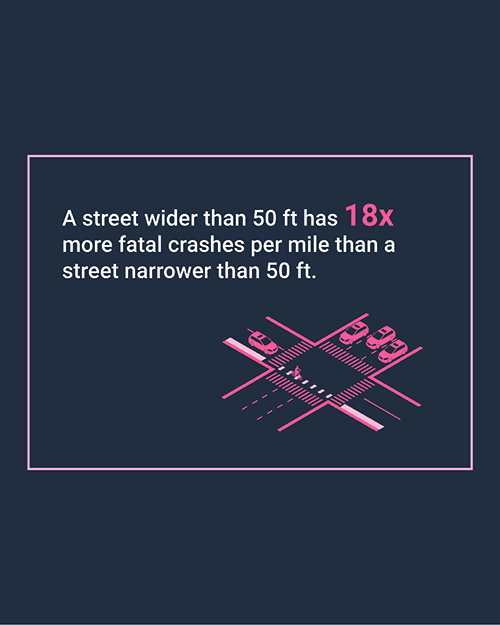
Wider streets encourage faster speeds, regardless of the posted speed limit. They also result in longer, crossing distances for people on foot. For this reason, the Complete Streets projects mean more than just lowering speed limits, but often narrowing travel lanes and squaring-off corners to encourage safer speeds and turns.
Data Source: Chicago crash statistics featured on this page are based on Chicago Police Department provisional data for 2023.
